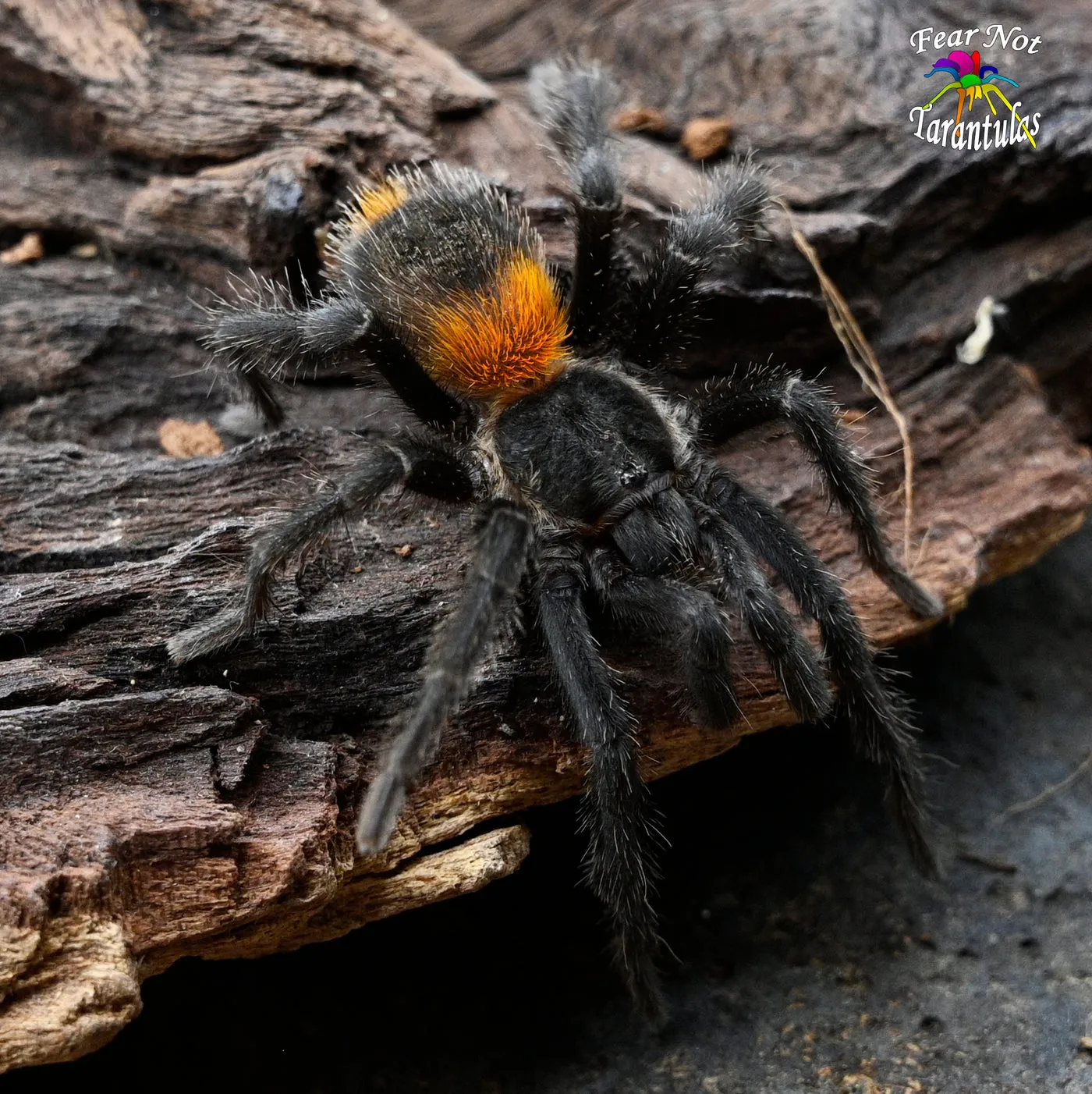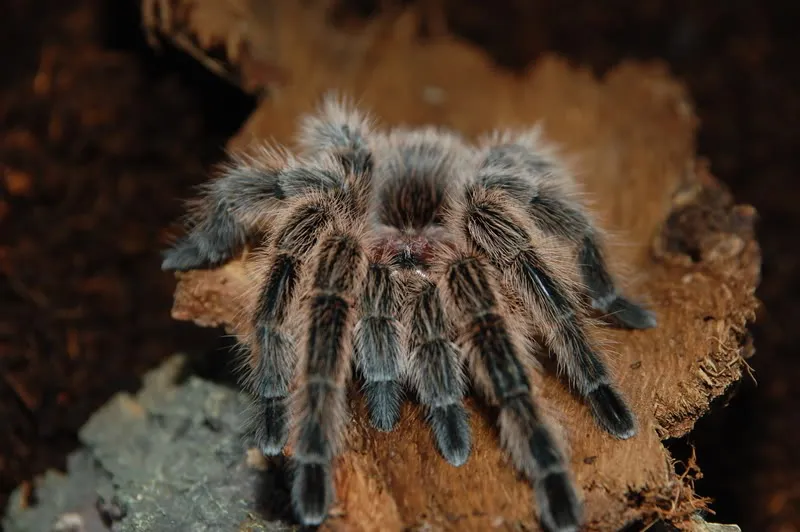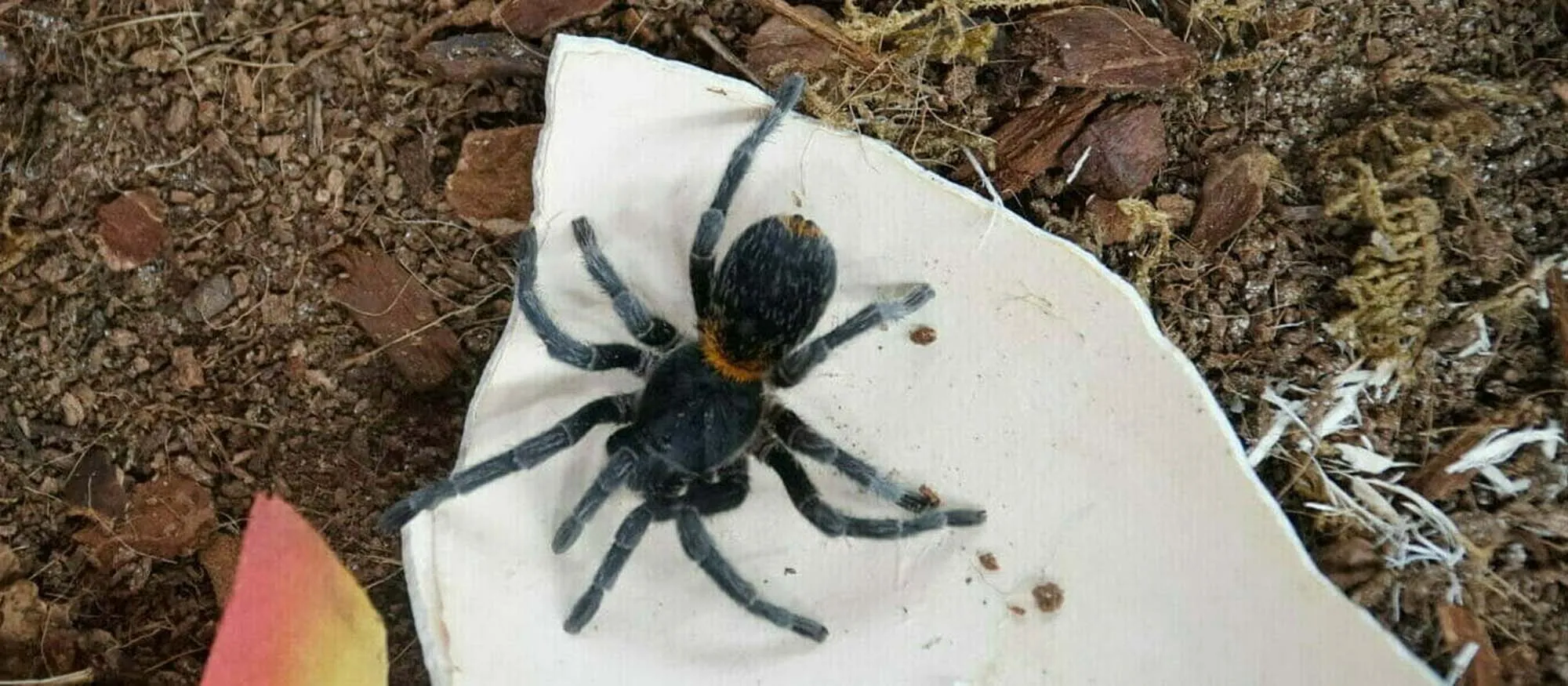What is a Chilean Red Flame Tarantula
The Chilean Red Flame Tarantula (Grammostola rosea), often simply called the Rose Hair Tarantula, is a popular pet tarantula. Known for its docile nature and beautiful appearance, this species is relatively easy to care for, making it a favorite among both beginner and experienced arachnid enthusiasts. Native to the grasslands of Chile, these tarantulas are renowned for their striking appearance and calm demeanor, which sets them apart from many other tarantula species. They are prized for their hardiness, their accessibility, and their relatively low maintenance requirements when compared to other exotic pets. If you’re considering adding one to your family, it’s essential to know the top facts about these captivating creatures.
Appearance and Characteristics
Understanding the appearance of a Chilean Red Flame Tarantula is a key part of appreciating its beauty. Their appearance is a mix of striking colors, from their overall hue to the specific features of their legs. Their size, too, contributes to their appeal as pets, making them manageable in captivity, and their lifespan is also an important aspect, as it gives owners insight into their commitment.
Coloration

The name “Red Flame” is derived from the colors on their bodies. While the exact colors can vary slightly between individuals, they generally exhibit a reddish-brown or copper tone across their carapace (the top part of their body) and legs. This coloration provides a lovely aesthetic, and is complemented by the hairs covering their bodies, which can range from light tan to a deep red. As they molt, the colors can intensify, giving these creatures an even more appealing and vibrant appearance. The hairs can create a fluffy look that makes these tarantulas look less intimidating than some of their relatives.
Size and Lifespan
Chilean Red Flame Tarantulas have a moderate size. The females are generally larger than males, reaching a leg span of up to 5-6 inches. Males are typically smaller. Their size is a significant advantage for pet owners since they don’t require enormous enclosures. Their lifespan is another appealing factor for enthusiasts. Females can live for 15 to 20 years or even longer, while males tend to have a shorter lifespan, typically living for 5 to 10 years. This longevity allows for a long period of enjoyment and companionship for pet owners.
Origin and Habitat
Knowing the origin and habitat of a Chilean Red Flame Tarantula will help to provide them with the right environment and give a better understanding of the tarantula’s needs. Their native habitat informs every aspect of their care. Replicating their natural environment is the most important step in ensuring the health and well-being of your tarantula.
Native Environment

These tarantulas are native to the arid grasslands of Chile, in South America. Their natural habitat includes a mix of dry, scrubby landscapes and grasslands. They are burrowing tarantulas that typically live in burrows that they either dig themselves or find in pre-existing structures. The climate in their natural habitat is relatively dry, with moderate temperatures. Understanding their natural environment is vital to providing them with appropriate care and helping them thrive in captivity.
Ideal Living Conditions
To replicate the Chilean Red Flame Tarantula’s natural habitat, a suitable enclosure is essential. They thrive in a terrarium that offers plenty of space, with a substrate that allows burrowing, such as a mix of coco fiber, peat moss, and vermiculite. Keeping the humidity level around 60-70% is ideal, which can be managed by providing a shallow water dish and occasionally misting the enclosure. Maintaining a temperature between 70-80°F (21-27°C) is also essential for their well-being. This setup ensures that the tarantula feels secure and can exhibit its natural behaviors.
Behavior and Temperament
Chilean Red Flame Tarantulas are known for their docile temperament, making them a great option for beginner tarantula owners. They generally prefer to keep to themselves, often spending much of their time in their burrows or hiding spots. Being a terrestrial species, they spend the majority of their time on the ground. This calm demeanor is a major factor in their popularity, which provides a rewarding experience. However, it’s important to understand the nuances of their behavior and how they may react under stress.
Handling Considerations

While these tarantulas are generally docile, it’s wise to handle them with caution. Frequent handling is not necessary, as it can be stressful for them. If you do choose to handle your tarantula, be extremely gentle and avoid any sudden movements. Always handle them over a soft surface to prevent injuries if they happen to fall. It is very important to wash your hands before and after handling to avoid any potential transfer of oils or chemicals. It is best to avoid handling them entirely if you are a beginner, until you know the correct behaviors.
Defensive Mechanisms
Even though they are relatively docile, Chilean Red Flame Tarantulas have defense mechanisms. The most common defense is flicking urticating hairs from their abdomen. These hairs can cause skin irritation if they come into contact. They also might try to escape or run away. In rare cases, they might bite, though their venom is generally not dangerous to humans. Understanding these defense mechanisms allows owners to interact with their tarantulas safely and minimize any potential risks.
Diet and Feeding
Proper nutrition is essential for the health and longevity of a Chilean Red Flame Tarantula. A balanced diet that mimics their natural food sources will ensure they stay healthy. Providing the correct food will also influence their growth and development.
Preferred Food

The primary diet of a Chilean Red Flame Tarantula consists of insects. Crickets, mealworms, and dubia roaches are popular choices because they are readily available. They also enjoy occasional treats like small lizards or mice, but these should be offered in moderation. It’s important to ensure that the insects you feed them are gut-loaded with nutritious food, so your tarantula receives essential vitamins and minerals. Always remove any uneaten food after 24 hours to prevent the build-up of mold or mites in their enclosure.
Feeding Frequency
The feeding frequency for Chilean Red Flame Tarantulas depends on their age and size. Spiderlings, or young tarantulas, should be fed more often, perhaps twice a week, while adults can be fed once or twice a week. You can gauge their feeding needs by observing their abdomen. A well-fed tarantula will have a round abdomen. Overfeeding can lead to health issues, so it’s important to avoid it. Monitor their eating habits and adjust their feeding schedule accordingly.
Health and Care
Providing the right care is essential for the health and well-being of a Chilean Red Flame Tarantula. This includes recognizing potential health issues and taking proactive steps to prevent them. By paying attention to their needs and behavior, you can ensure your tarantula thrives in captivity.
Common Health Issues

Chilean Red Flame Tarantulas are relatively hardy, but they can be susceptible to certain health problems. Dehydration can occur if they do not have access to clean water. Mites can also infest their enclosures, so it’s important to maintain cleanliness and hygiene. Another thing to watch out for is injuries during molting, which is why providing a suitable environment and ensuring their safety is critical. Regular observation and quick action when health issues arise are vital for their well-being.
Preventative Care
Preventative care is the best way to keep your tarantula healthy. This includes providing a clean and appropriately humid environment. Regularly check the enclosure for any signs of mold, mites, or other issues. Make sure you have the correct temperature and humidity levels. Always provide fresh water and offer a varied diet. By implementing these simple measures, you can significantly reduce the risk of health problems and ensure your tarantula leads a long and healthy life. Regular monitoring of your tarantula’s behavior, appetite, and molting cycles can also help you quickly identify any potential problems.
Why Consider a Red Flame Tarantula
In conclusion, the Chilean Red Flame Tarantula makes a fantastic pet due to its docile nature, manageable size, and striking appearance. Their relatively low maintenance requirements and long lifespan make them an excellent choice for both beginner and experienced tarantula keepers. By understanding their needs, providing the correct care, and appreciating their unique characteristics, you can enjoy the fascinating world of these amazing creatures. Owning a Red Flame Tarantula is a rewarding experience and provides a great opportunity to learn and appreciate the beauty of the exotic animal kingdom.
